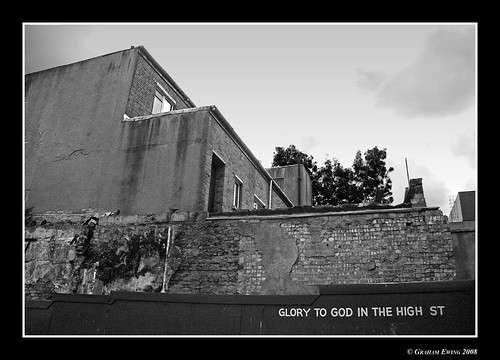
This is the third of three posts exploring alternative visions for ecumenism. The aim is not to predict the future but to show there are other possibilities besides full visible unity. So, far I have written about a new ecumenical vision and a lay ecumenical order .
When George MacLeod was a minister in Goven, Glasgow, during the 1930s, his church on the main road had a stained glass window, inscribed with the words 'Glory to God in the Highest'. The story goes that after someone threw a stone through the window it read: 'Glory to God in the High Street'.
When Father Christopher Jamieson agreed to Worth Abbey being used for the BBC television programme, 'The Monastery' he was surprised at the interest from secular people in Christian spirituality. Where could they find sanctuary in their places? A weekend at Worth Abbey might be a possibility, but where are the local centres for sustaining spirituality?
A variety of churches means there can be a range of ministries in a given locality. Where each church tries to do everything the chances are at best that little is done very well. Usually, many things are not done at all.
Today, people will not be told what to believe. Many want to explore for themselves and many who have not thought about it might respond positively to an invitation to explore faith, without strings.
If churches see their role as pedaling a package of beliefs; if they offer a take it or leave it package then many will not listen. If it's not bonkers ideas about evolution, it's insistence upon highly detailed correct practices or upon the high moral ground on a range of bizarre issues. Why can't people be offered the opportunity to reflect in a peaceful environment or discuss their concerns with someone who has not got an axe to grind or simply to join in with what's going on because they see the point of it?
The best evangelism is through making friends and offering genuine companionship for the spiritual journey everyone. The churches cannot do this well when they work independently of each other. Different people have different needs and a variety of congregations in an area can go some way towards covering most people's preferences.
There are really two things needed. The first is recognition that the churches together are the church in this area. Presumably, each congregation prays for the area and so why not collaborate? The second is to be strategic. Is it really necessary to run two cafes in the same area, or two youth clubs or lunch clubs? Maybe there is a need for more than one of some things but this decision ideally comes from assessing the area and what is already going on. Once we get that far, perhaps churches together can address the more difficult question of what is not available in the area.
What we lack in most neighbourhoods is accessible sacred space. It may be inaccessible because it is locked all week but more like it is inaccessible because of perceived terms and conditions of entry. Imagine a group of churches choosing one space to be open to all for prayer. They might pool resources to make it accessible in terms of heating and toilets, they might resource the space in terms of art and literature and volunteers from the churches might act as wardens. Also, as a shared space there would be less pressure for the peculiarities of one tradition to dominate and so the place will seem more accessible to those who want such a space but are suspicious of the motives of the churches.

Comments